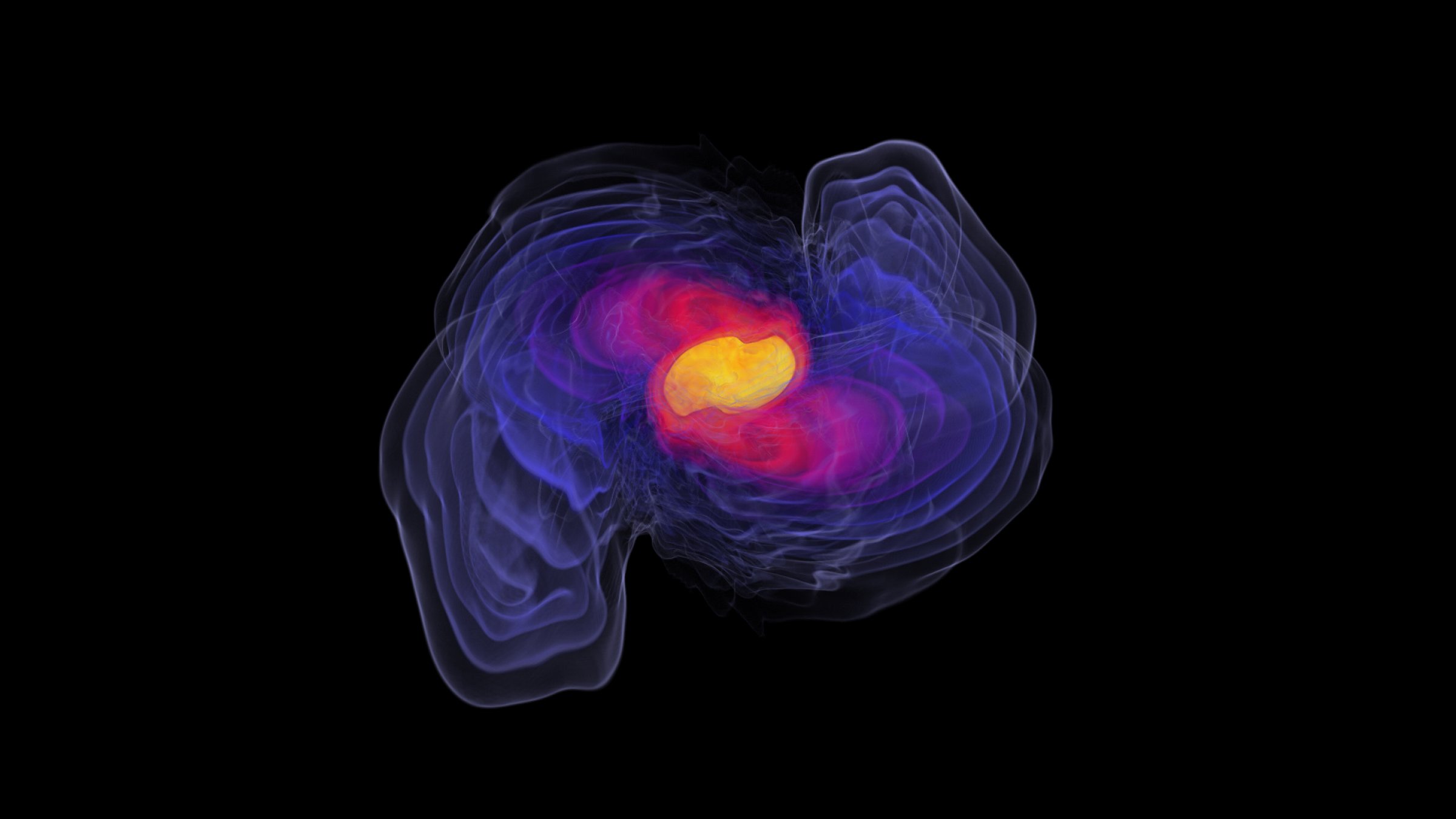October 26, 2017
Understanding neutron stars better
Calculation time worth more than 1 million euros for Frankfurt physicists
Prof. Luciano Rezzolla, Senior Fellow of the Frankfurt Institute for Advanced Studies (FIAS) and Professor of Theoretical Astrophysics at the Goethe University, will receive 80 million CPU hours at the supercomputer superMUC of the Leibniz Computing Center in Garching near Munich next year for the simulation of neutron star duplex systems.
The calculation time worth more than one million euros was awarded to him by the Gauss Alliance in a highly competitive competition. Soon after the first comprehensive observation of a fusion of two neutron stars last month, Prof. Luciano Rezzolla's approval for computing time allows him to create more precise models of such systems.
Already a neutron star alone fascinates science. After all, these are unimaginable, dense balls of nuclear matter that are created in a supernova explosion. This extreme density, temperature and gravitational force cannot be reproduced with physical experiments on Earth. As an alternative, observations by astronomers and computer simulations remain. A colliding double star system of two neutron stars therefore belongs to the premier class of events in the universe. In order to describe such a system with the computer, complex numerical simulations have to be carried out. These have to combine the equations of general relativity theory with those of relativistic hydrodynamics and magnetohydrodynamics and additionally the complex microphysics has to be considered when fusing two neutron stars.
On August 17, the international scientific community succeeded for the first time in investigating such a collision by all means of modern astronomy. A lot of new information about neutron stars was collected and some previous theories for the inner structure of the neutron stars could be contradicted, but it is still unclear how they really look inside. However, an important piece of the puzzle to explain the secrets of neutron stars was found - now it's the turn of theorists like Luciano Rezzolla to create more precise models and predictions from the new data. With the computing time of the Gauss Alliance we are able to simulate the gravitational wave and electromagnetic signals of double star systems from neutron stars and to predict their core structure more accurately. By awarding this contract, we will receive valuable funds to carry science forward in the heart of the MAGIC research initiative,"explains Professor Luciano Rezzolla.
The Gauss Alliance supports the scientific community in Germany by creating the prerequisites for the sustainable and efficient use of supercomputing resources of the highest performance classes, in particular by coordinating and bundling complementary competencies and diversified computer architectures as well as the associated access structure. It promotes the scientific topic of' High Performance Computing' as an independent strategic research activity and provides for an improved international visibility of German research efforts in this field.
Further information: Prof. Luciano Rezzolla, Institute for Theoretical Physics, Riedberg Campus, Tel.: (069)798-47871, rezzolla_at_th.physik.uni-frankfurt.de.
